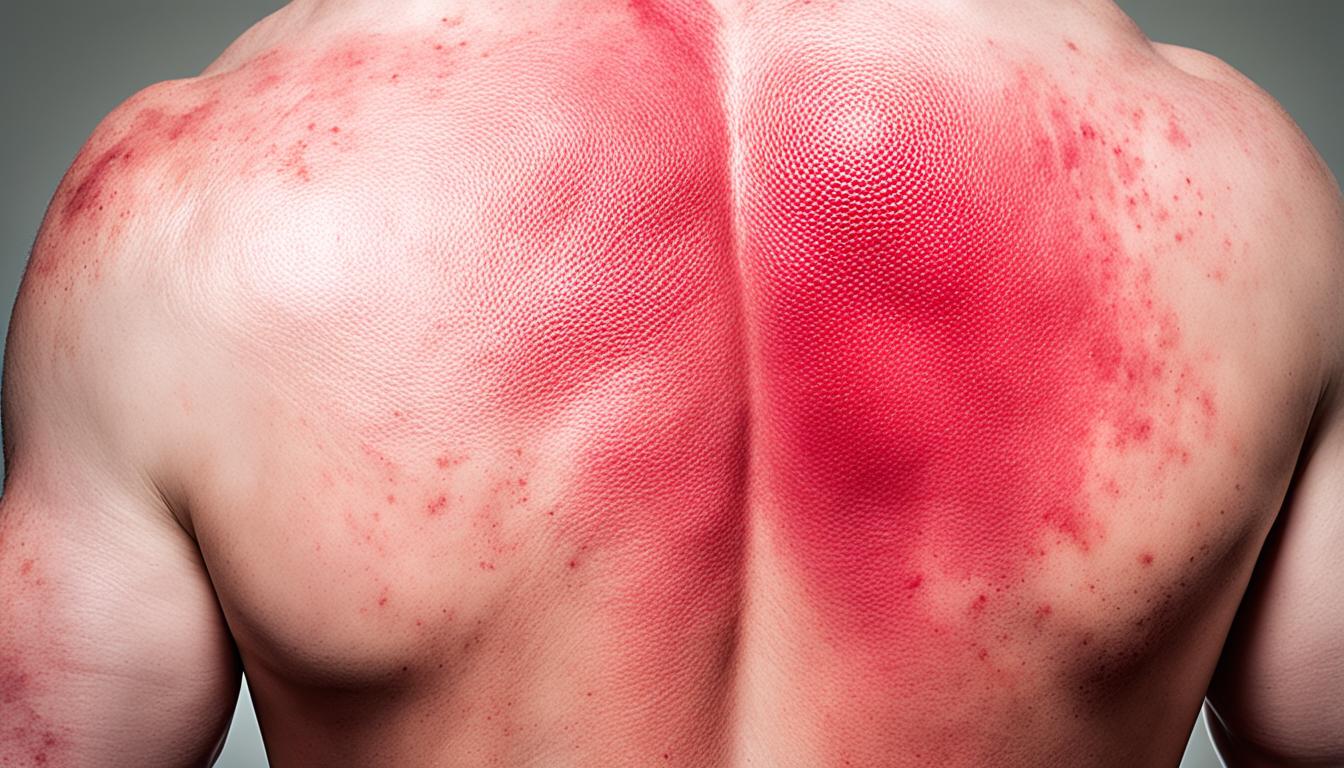Roseola disease is common among infants and young children. It is caused by human herpesvirus 6B or HHV-7. This illness starts with a high fever and later, a rash appears.
Children with roseola get a sudden high fever that can last a few days. After the fever goes down, a rash shows up. It begins on their trunk and spreads to the arms, legs, and face. This rash is maculopapular, made of small raised bumps.
Diagnosing roseola is often by looking at the symptoms and examining the child. There are no special tests, so doctors use what they see and the child’s health history. They also make sure it’s not another sickness.
To help with roseola, the focus is on making the child comfortable and bringing down the fever. Doctors might suggest over-the-counter medicines like acetaminophen or ibuprofen. The child should also rest a lot and drink plenty of fluids.
In rare or serious cases, like with some immune system problems, doctors are looking at using stem cell therapy for roseola. Stem cells might help by making the immune system stronger, aiding in recovery.
Key Takeaways:
- Roseola mainly affects young kids.
- It starts with a bad fever and then a rash appears.
- Doctors find out if it’s roseola by looking at the child and talking about their health.
- The main treatments are to lower the fever and make the child feel better.
- Stem cell therapy is being studied for very sick or vulnerable patients.
Human Herpesvirus 6 and 7 Infections and Complications
Human herpesvirus 6 (HHV-6) families have two types: HHV-6A and HHV-6B. HHV-6B mainly causes roseola, while HHV-6A is less common. Both can cause brain issues like encephalitis.
In people with weak immune systems, HHV-6B can do more harm. It can cause serious brain problems and affect well-being greatly.
It’s vital to check the virus levels in the cerebrospinal fluid for managing encephalitis. Starting antiviral drugs early, like ganciclovir, can help stop the virus and lower neurological problems.
Sometimes, HHV-6 infection leads to lasting brain issues. Patients need ongoing care. Doctors must watch them closely and provide the right care to reduce these complications’ effects.
Neurological Complications of HHV-6 Infection
| Complication | Description |
|---|---|
| Encephalitis | Inflammation of the brain causing symptoms like headaches and seizures. |
| Encephalopathy | Brain problems that can change mental status and cause other deficits. |
| Viral Load | Shows how much HHV-6 is in the cerebrospinal fluid, marking infection severity. |
| Neurological Sequelae | Long-term issues from HHV-6, including problems with thinking and movement. |
Treating HHV-6 and HHV-7 involves accurate diagnosis and viral load checks. By knowing these infections’ effects on the brain, doctors can help patients live better lives.
Human Herpesvirus 7 and Other Considerations
Human herpesvirus 7 (HHV-7) is a virus that mostly affects kids. It can cause a rash called roseola in children. In adults without immunity, it leads to a different rash called pityriasis rosea. It’s not just rashes though. HHV-7 can also get into the brain. This might cause seizures or swelling of the brain, which can be serious.
There’s something else to think about with these viruses. Some people carry HHV-6 in their genes. This happens when the virus sticks to the ends of their DNA. This can cause issues with the nervous system. It also makes it harder for the body to fight new HHV-6 infections. This could have lasting effects.
Besides, HHV-7 changes how the immune system works. It can even help other viruses grow stronger. Together with HHV-6B and parvovirus B19, HHV-7 might make illnesses worse. This can make the symptoms and problems more severe.

